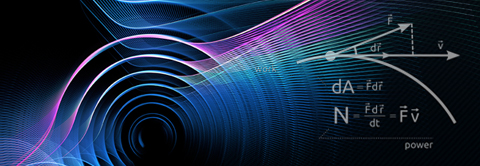Quantum electron optics using flying electrons
2017.01.26 23:43
| 날짜 | 2017-02-01 14:00 |
|---|---|
| 일시 | Feb. 1 (Wed.), 2p.m. |
| 장소 | #1323(E6-2. 1st fl.) |
| 연사 | Dr. Michihisa Yamamoto, Department of Applied Physics, The University of Tokyo |
Quantum electron optics using flying electrons
Dr. Michihisa Yamamoto, Department of Applied Physics, The University of Tokyo
Feb. 1 (Wed.), 2p.m. #1323(E6-2. 1st fl.)
Abstract: Quantum electron optics is a field in which one manipulates quantum states of propagating electrons. Combined with technologies for confining and manipulating single electrons, it allows us to investigate the scattering and interference of electrons in a unit of a single electron. The necessary elements of quantum electron optics experiments include single electron beam splitter, phase shifter, Coulomb coupler, single electron source and detector, spin-orbit path and electron-pair splitter.
In this talk, we present development of some of these elements. The beam splitter and phase shifter are implemented in our original two-path interferometer [1-3]. This interferometer has been shown to be the only reliable system for the measurement of the transmission phase shift of electrons [4,5]. To suppress decoherence induced by the electron-electron interaction and enhance the interference visibility, we recently developed a two-path interferometer of depleted channels, where single electrons are injected by means of surface acoustic waves (SAWs). We also confirmed that a single electron in a static quantum dot (single electron source) can be adiabatically transferred into a SAW-driven moving quantum dot [6], a necessary ingredient for achieving the high interference visibility of a single flying electron.
Quantum electron optics also targets the manipulation of spins of flying single electrons. We found that the spin information of one or two electrons can be transferred between distant quantum dots, which work as the single electron source and detector, with the fidelity limited only by the spin flips prior to the spin transfer [7,8]. We also realized an electron-pair splitter that can be used to split spin-entangled electrons in a moving dot into different moving dots. Combined with single spin manipulation using the spin-orbit interaction (spin-orbit path) [9], this splitter should allow for Bell measurement of electron spins.
This work is in collaboration with S. Takada (now at Institut Neel), R. Ito and K. Watanabe at the University of Tokyo, B. Bertrand, S. Hermelin, T. Meunier, and C. Bäuerle at Institut Neel, and A. Ludwig and A. D. Wieck at Ruhr-Universität Bochum.
[1] M. Yamamoto et al., Nature Nano. 7, 247 (2012)..
[2] A. Aharony et al., New J. Phys. 16, 083015 (2014).
[3] T. Bautze et al., Phys. Rev. B 89, 125432 (2014).
[4] S. Takada et al., Phys. Rev. Lett. 113, 126601 (2014).
[5] S. Takada et al., Appl. Phys. Lett. 107, 063101 (2015).
[6] B. Bertrand et al., Nanotechnology 27, 204001 (2016).
[7] S. Hermelin et al., Nature 477, 435 (2011).
[8] B. Bertrand et al., Nature Nano. 11, 672 (2016).
[9] H. Sanada et al., Nature Phys. 9, 280 (2013).
Contact: SunYoung Choi, (sunyoungchoi@kaist.ac.kr)
Center for Quantum Coherence in Condensed Matter, KAIST







